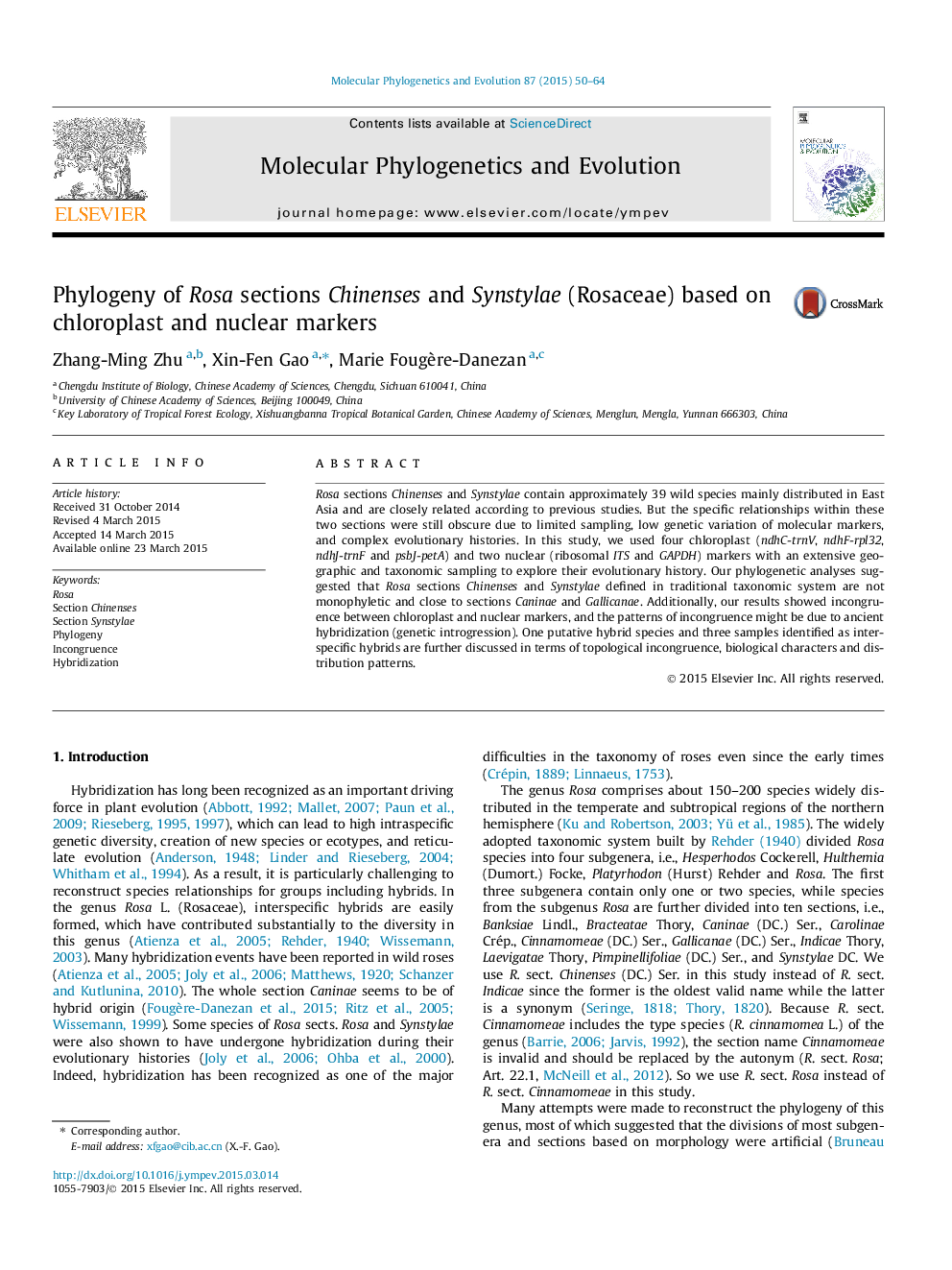| Article ID | Journal | Published Year | Pages | File Type |
|---|---|---|---|---|
| 5919123 | Molecular Phylogenetics and Evolution | 2015 | 15 Pages |
â¢We present the most comprehensive phylogeny of Rosa sections Chinenses and Synstylae.â¢Phylogenies based on chloroplast and nuclear markers exhibit obvious incongruences.â¢Hybridization played an important role in the evolutionary history of Rosa.
Rosa sections Chinenses and Synstylae contain approximately 39 wild species mainly distributed in East Asia and are closely related according to previous studies. But the specific relationships within these two sections were still obscure due to limited sampling, low genetic variation of molecular markers, and complex evolutionary histories. In this study, we used four chloroplast (ndhC-trnV, ndhF-rpl32, ndhJ-trnF and psbJ-petA) and two nuclear (ribosomal ITS and GAPDH) markers with an extensive geographic and taxonomic sampling to explore their evolutionary history. Our phylogenetic analyses suggested that Rosa sections Chinenses and Synstylae defined in traditional taxonomic system are not monophyletic and close to sections Caninae and Gallicanae. Additionally, our results showed incongruence between chloroplast and nuclear markers, and the patterns of incongruence might be due to ancient hybridization (genetic introgression). One putative hybrid species and three samples identified as interspecific hybrids are further discussed in terms of topological incongruence, biological characters and distribution patterns.
Graphical abstractDownload full-size image
